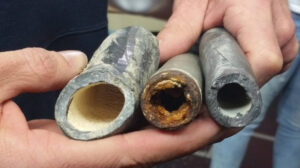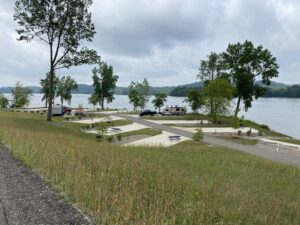
INDUSTRY TRENDS
Creating a Positive Campground Experience
September 29, 2022 | WRITTEN BY: Environmental Design Group
Written by: Terry Fercana, Business Development Executive, Dave McCallops, PE, Director of Water Resources and Stefanie Smith, AIA, LEED AP BD+C, Director of Camps & Campgrounds
Camping is all about the guest experience. It connects us with nature, generates memories that last a life-time, and addresses all of our senses in a way that’s unique to each of us. The value we place on that experience is what keeps us coming back for more.
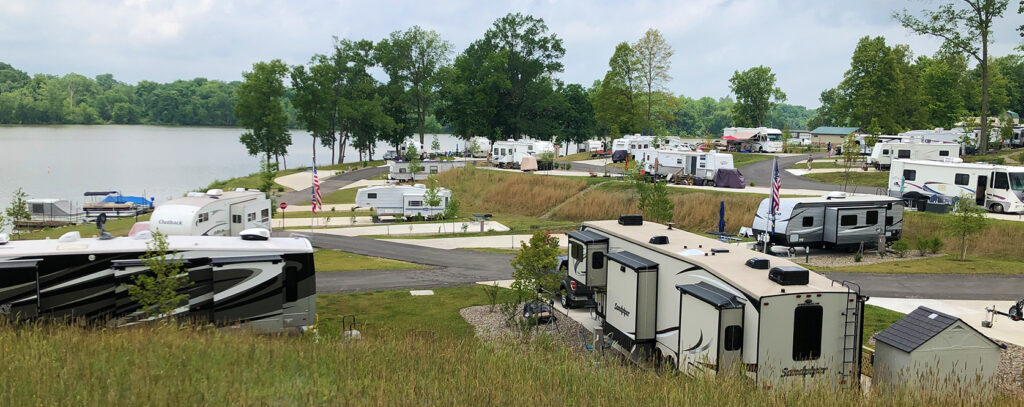
In 2021, nearly 57 million households in North America went camping – an increase of almost nine million from the previous year – and almost half of these households camped more than three times a year. Even as the COVID restrictions end and consumers move to a new normal that resembles pre-COVID times; camping has become a part of the new normal for millions of households.
From sleeping bags and tents, to cabins, RVs, treehouses, yurts, and other glamping options, today’s campgrounds and RV parks are as diverse as its visitors. With a continued increase in those seeking the camping experience, it’s no surprise that campgrounds are evolving and reinventing themselves across the country.
This translates into an increased investment by single campground owners as well as interest from new investors who range from experienced campground managers to investors that have not previously built and/or managed a campground or resort. Although location, brand and amenities may differ, the process should be the same.
So, what does this process look like and what should be considered? The answers to these questions can be broken down into five parts.
Feasibility Study & Master Plan
A feasibility study and master plan answers these two questions: 1) Can we technically and cost effectively build the desired campground components on the site? and 2) What will our site layout and campground look like based on the site constraints?
A new investor might be determined to build on what they think is a perfect site – a stunning piece of land with breathtaking views. In their enthusiasm, they neglect to undertake a feasibility study to determine the practicality of developing this site. Is the terrain too hilly or have wetlands? Are on-site utilities feasible or are existing utilities located miles away? Are there regulatory or zoning constraints? These and other factors may well, and have, put development costs out of reach.
When we begin a feasibility study, our design team immediately tests and analyzes the site – looking for constraints such as steep slopes, significant wetlands, flood plains and other natural impediments. Additional considerations include:
- the type(s) of camping that will be incorporated – seasonal, transient, primitive, glamping, etc.;
- the number of campsites envisioned versus the number that will fit on the site;
- how visitors will get to and move around the campground;
- water, sewer, electric, and other infrastructure, including Wi-Fi; and
- assessing the potential for future expansion.
From this point, we’ll develop a master plan which provides a deeper understanding of how the design works and will enhance the visitor experience. This begins with the arrival and check-in process, and includes:
- easy-to-follow wayfinding and circulation patterns;
- the layout and design of camping sites to maximize views and create attractive living spaces; and
- the size and placement of buildings and amenities to support programs and operations.
A well-designed campground builds anticipation and creates excitement from the moment campers arrive – it also creates a sense of community that connects people to one another and the places they share or allows campers a sense of privacy if that is desired, all responding to the property’s natural beauty and terrain, and ultimately, helping to drive revenue.
Design Development
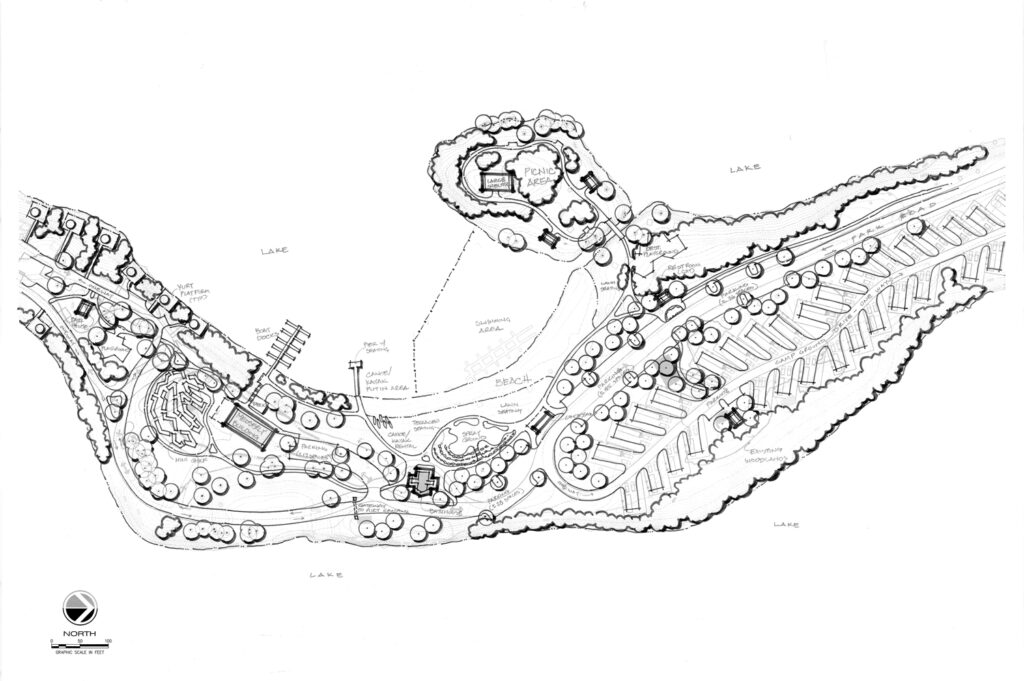
Campgrounds are small communities. Depending on the location, local, state and federal codes, utility requirements, environmental regulations and process, zoning and permitting, and other requirements are often vastly different for a campground than for urban or suburban developments.
This includes water, sewer, stormwater management and electricity, since the typical RV-er today is looking for full hookups at their sites and enough power to keep their A/C, lights, and TVs on while keeping all electronic devices fully charged and connected to Wi-Fi.
A faulty or inefficient utility layout associated with a master plan that overlooks these needs can lead to unnecessary utility placement or utilities having to be relocated during subsequent phases of construction – creating delays and costly overruns. Simple, cost-effective and efficient infrastructure and design solutions that work well together, reduce initial capital investments but also prevents long-term maintenance and operation costs, are critical for the long-term success of the infrastructure.
Construction Documents
Once the design concept is approved, a final set of construction documents with technical specifications is developed. These construction documents determine how a campground will be built. The key is to develop the design concepts far enough during the design process for a competent contractor to install the proposed improvements and to satisfy the requirements of the local and/or state regulatory agencies for approval; we understand the difference.
Along with an Opinion of Probable Construction Cost – also known as a cost estimate – these documents include all design and construction details and technical specifications that allow an owner and/or investor to secure financing, apply for permits, obtain local zoning and building department approvals, and solicit bids/quotes from contractors or vendors.
Construction
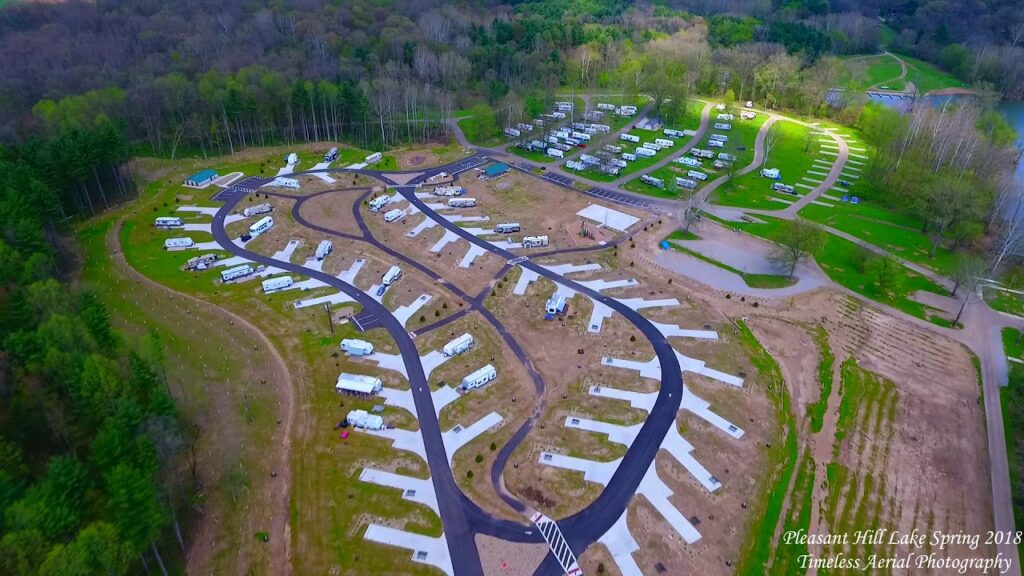
This leaves one final step – building the campground. While it’s the homestretch, there’s a lot to do, and that includes soliciting bids/quotes from contractors and vendors, managing changes that may occur during construction, verifying that the campground is built according to the design, working with local agencies to approve all construction elements and most importantly, getting your campground ready for guests.
Marketing & Branding
It’s not enough to say, “If we build it, they will come.” Developing a campground requires marketing and branding every step of the way. This includes strategic planning, community outreach, website and print design, public relations, social media, photography/videography and graphic design. Identifying your audience, understanding how to capture – and keep – their interest and ongoing communication is essential – not only get the word out, but to keep telling your story.
As “The Community Impact People,” Environmental Design Group (EDG) specializes in developing campgrounds that combine quality guest experiences with dynamic destinations. With more than 10 years of experience in the campground industry, we have provided planning, design, engineering and construction management services, along with marketing and communication strategies, for campground Owners and Investors across the country.
Our campground team is led by Stefanie Smith, AIA, LEED AP BD+C, Director of Camps & Campgrounds, Dave McCallops, P.E., Director of Water Resources, and Tammi Nagucki, CPSM, Principal of Marketing, Client Experience & EDG Creative.
For more information, please contact us at (330) 375-1390, [email protected], [email protected], or [email protected], or visit us at Booth #237 at the National Association of RV Parks & Campgrounds (ARVC) National Conference, November 7-10 in Orlando, Florida.
RELATED TAGS:
[xyz-ips snippet=”comment-form”]


